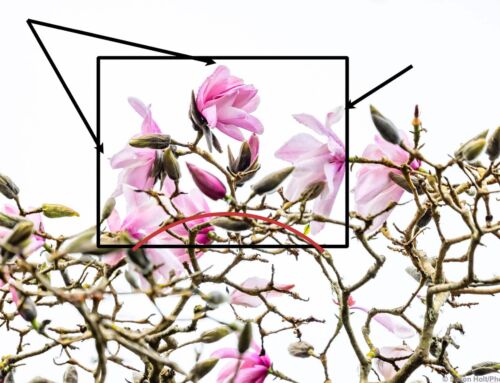One of the most confounding problems a garden photographer has is color accuracy, and is never as simple as: see flower – photograph flower.
The color of the light reflecting off the flower affects its color, and the color of light changes all day. Morning light is different from mid-day light. Evening light is different from open shade beside a building. Woodland light is different in dense shade or under a single tree.
It’s complicated; but I find it an artistic challenge to be used to create mood. Sometimes “accurate” color is up for artistic interpretation and each photographer can have fun deciding how cool, or warm, or bright, or rich the color can be in the final photo we present to others.
But when the subject is a flower, we usually don’t want the photographer to decide the color. We expect the color we see in a photo to be the color we see in the garden. I hate to break the news, but that is almost never true, for so very many reasons – not the least of which is that flowers themselves change color based on climate, soils, genetic variance, and all during the day. There are now new flowers being developed that are bred to change color radically in one day, such as petunias by Revolution Bioengineering that take advantage of the natural circadian cycles.
Colors differ also depending on the medium we view the flower photograph. A coffee table book will be different from the Sunday newspaper supplement. The professional photographer’s calibrated studio monitor will be different from other screens. The photographer deals with color balance, white balance, color spaces, color profiles. And there is always the memory lapse between when we click the shutter and when we finish with the photo in our computer – hours, days, or all too often, months later.
Is it any wonder that when we look at flower pictures on-line we can never be sure of the color of a flower ? Don’t we all have fun, smirking at the outlandish colors we see on internet searches of flowers ?
But then there is the ageratum affect. A beautiful blue flower comes back in the camera as pink.
Here is a geranium photo that I “think” I just corrected for a new book my friend Robin Parer of Geraniaceae has just finished. I await her approval, or kind rejection in her lilting Aussie accent: “It’s not quite right is it?” I hear her saying.
Before and After Slider
I photographed this Geranium pyrenaicum ‘Bill Wallis’ 25 years ago Robin. And now that you’ve finished the book you expect me to remember the subtleties of hue ?!
What has happened here is not a faded old piece of Kodachrome film but a color shift well known to flower photographers, named for the ageratum flower, and acknowledged by Kodak on its website as “anomalous reflectance due to the fact that some pigments reflect infrared light that is picked up as red by the film”.
Indeed many blue ageratums appear pink when you see them in a photograph, as Blue Danube opening this post, as do many flowers with infrared color in them. We have all seen those amazing infrared photos of the markings and striations that birds and butterflies see in many flowers because their eyes see more color than human eyes. The human eye has more limited perception than nature provides. When we see blue and the camera sees pink we begin to realize what we are missing.
I have tried without success to convince my flower catalog customers over the years that this color shift in what our eyes see versus what the camera sees is an opportunity ask customers to open their doors of perception on this matter, to embrace what Mother Nature really wants us to see. So far they keep asking me to adjust color for human perception.











Leave A Comment